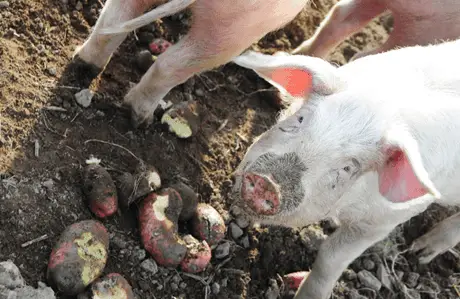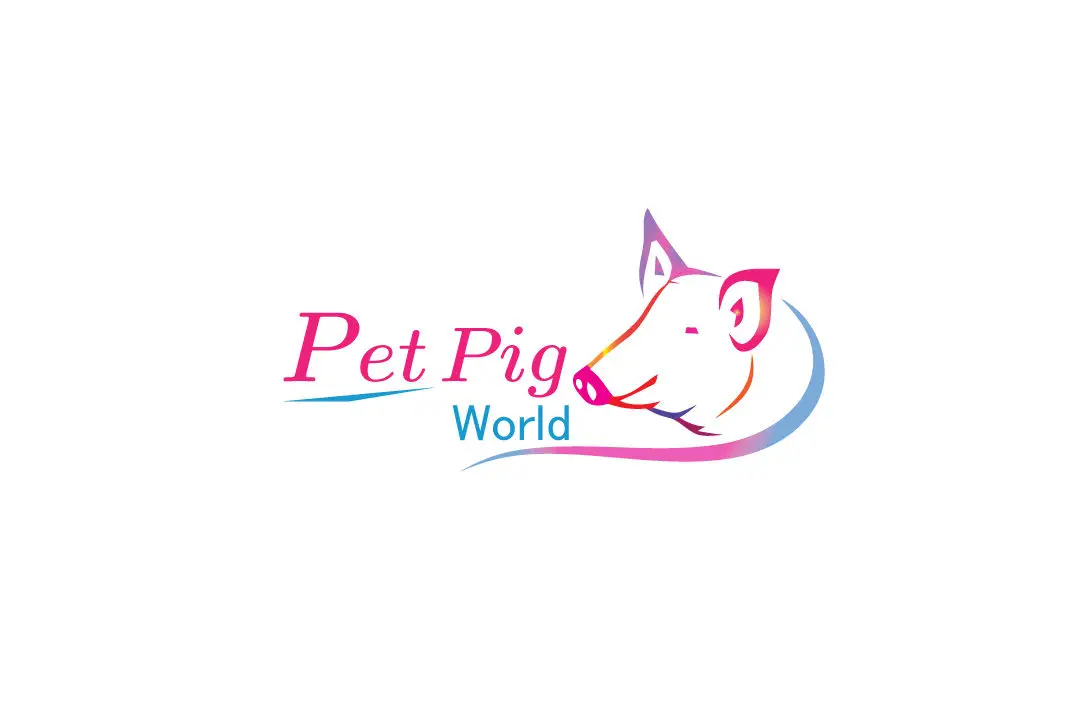It is often recommended that pigs are fed vegetables, but there are often questions whether some vegetables, like potatoes, really are safe for swine.
Are pigs allowed to eat potatoes? Pigs can eat potatoes and can use it as a good source of energy. However, potatoes fed to pigs would either have to be cooked or dried. Otherwise, it can potentially cause some stomach issues.
Because potatoes have its fair share of benefits to your pig’s diet, it’s important to find out how you can maximize it while minimizing the risks at the same time.
Why Some People Discourage the Use of Potatoes as Pig Food
Why do some people say that potatoes are not good for pigs?
It’s actually normal for potatoes to be fed raw to livestock. But while the stomachs of cattle and sheep are able to digest potatoes easily, pigs have a harder time doing it.
Potatoes are 70% starch, something that a pig’s stomach cannot process in huge amounts. But when cooked or dried, the potatoes become much easier to process.
Aside from that, potatoes also have high water and energy content, but low in fiber and protein. The high water content may affect the amount of feed that the pig eats. The low fiber content will also mean that some additional roughage would have to be added.
Green potatoes are even more dangerous. This is a signal of a toxic substance called solanine being formed.
Solanine isn’t only found in potatoes, but in tomatoes and eggplants as well. It can also be present in tubers, leaves, and some fruits. The more that potatoes are exposed to sunlight, the more that potatoes produce it.
What does solanine do?
Solanine can damage the cell membranes inside a pig’s intestines, affecting its ability to process food properly. It can also get in the way of the production of different enzymes that pigs need.
You should also know that solanine is more abundant in the potato’s skin. Although a few may not harm your pig, too much of it will eventually hurt its stomach.
To stay safe, always check potatoes for any greening. This is a visible sign of solanine formation. These greenish parts would usually develop around potato spores first.

Preventing Toxin Production in Potatoes
Let’s say you have an entire stock of potatoes that you’re planning to feed to your pig. That’s okay, as long as no green spots have surfaced yet, it should be safe for your pig to eat. You can either cook them, or dry them up so that your pig can digest them better.
For the rest of your stock of potatoes, proper storage is key.
There are 3 things that trigger the production of solanine in potatoes:
- Exposure to light
- Physical damage
- High temperatures
- Low temperatures
Keep the potatoes in an opaque sack or container to make sure they are not as exposed to sunlight. Don’t store them in the fridge either, as it’s too cold. Leaving them out in the kitchen or pantry is not right either, because the temperature may be too high.
Find a cool, dry place where you can place the potatoes to make sure their quality is kept intact longer. Be careful about bumps, cuts and bruises on the potatoes’ skin as well, as this would also start the production of solanine.
What to Feed Your Pig (Aside from Potatoes)
One of the biggest reasons why pig owners feed potatoes to their pigs is because they want to cut back on costs. However, you also have to remember that potatoes alone will not give your pig a balanced diet.
Here’s an overview of what you should be feeding your pig depending on what stage your pig is in.
Piglets are the adorable babies in the pig world, so you can just imagine what kind of diet they should be given. Small pellet feeds are optimal because they are easy to eat and easy to digest.
If your pig is just about to be weaned from its mother’s milk, then it’s also ideal that you start introducing the feeds you’ll be feeding it after weaning. This familiarizes your piglet to the feed and will make the weaning process easier.
Pellet feeds are usually formulated specifically for the needs of a growing pig. This means that it has the right amount of carbohydrates, proteins, vitamins and minerals.
These can be easily found at any feed store or farm supply store.
- Growing Pigs
Growing pigs require more in terms of nutritional content, simply because its own body should be able to support and promote proper growth. This is why at this stage, grains are added to a pig’s pellet feed diet.
As your pig gets larger, you may eventually start to wean them off the pellet feeds and concentrate on grains alone. This is going to be enough for the nutritional needs.
There may be cases where your vet may feel that your pig would need an additional mineral or vitamin, but that’s okay. There are a number of supplements that you can use to make sure these nutritional demands are met.
- Mature Pigs
Upon maturity, your pig can be fed different kinds of whole grains like barley, rice, corn and wheat. Because these are rich in carbohydrates, they will help your pig gain weight.
However, note that this weight gain would mainly be caused by additional fat. This is why aside from all these carbohydrates, you should also introduce proteins to your pig’s diet to promote muscle development.
Soybeans and alfalfa are a great option if you want some added protein.
Just remember that in feeding your pig grains, it is ideal for the grains to be processed first. This will make it easier for your pig to digest them more properly.
You can try cracking or rolling them. Soaking them is also a good idea because it can help increase your pig’s water intake as well. However, this could open the risk of molds developing, so make sure your pig consume the grains when it’s freshly soaked. Soaked grains should not be stored over long periods of time, either.
Feeding Other Vegetables and Fruits to Your Pig
Adding some fruits and vegetables to your pig’s diet is a great idea because of the array of vitamins, minerals, and other nutrients these can contribute for your pig’s overall health. Potatoes may be in abundance in your area, but there are a number of other choices you can add.
Leafy vegetables are just as healthy for pigs as they are for humans. You can add cabbage, lettuce, spinach or sweet potato vine to your pig’s diet. Fruits like bananas, apples, melons, and pears are also a great addition.
Just make sure that you don’t overdo the fruits because of their sugar content.
They say that the more color you add to your diet, the healthier it becomes. And it’s true! Fruits and vegetables don’t just add color to you pig’s diet, they add a whole lot of benefits in terms of your pig’s nutritional needs, too.
Related Questions
What foods should not be fed to pigs?
Pigs should not be fed moldy, slimy, rotten food because this can upset their stomach. They should not be fed meat either, despite the fact that they are omnivores and will eat meat when given the chance. Meat opens the risk of the pig contracting a disease. Be careful about feeding your pig leftovers, too. Even if you take out the meat, the meal would still have been in contact with meat, which means the risks are still there.
Can pigs eat eggs?
Pigs can eat eggs, although eating them raw may result to an imbalance in biotin absorption. This can result to dermatitis. What you can do is add some biotin in your pig’s list of supplements so that no imbalance can occur when you feed eggs to your pig.
Do pigs bite?
Pigs can bite, although this is usually a coping mechanism to trauma developed over time. Pigs that have been continuously hurt physically or emotionally, for example, may eventually become aggressive. The same thing can happen if the pig is left untrained and uncared for. Generally though, pigs are among the gentlest animals there are. As long as you care for them properly, there should be no reason for them to become aggressive.
